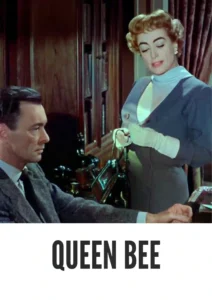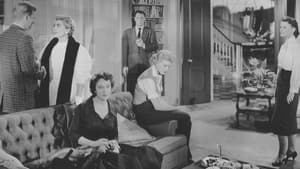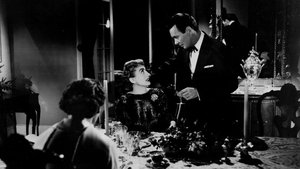Contact: info@alwanfilm.com
Video Sources 0 Views

Queen Bee 1955 Colorized
Synopsis
Queen Bee 1955 Colorized Review: A Dark Drama of Manipulation and Betrayal

Introduction
Released in 1955, Queen Bee is a gripping drama directed by Ranald MacDougall and featuring a powerhouse performance by the iconic Joan Crawford. Set in the backdrop of Southern aristocracy, the film tells a story of manipulation, power, and the devastating effects of toxic relationships. With its vivid portrayal of psychological warfare within a family, Queen Bee remains a dark, suspenseful masterpiece of mid-century American cinema.
In this review, we will explore the intricate narrative of Queen Bee, analyze its complex characters, and examine the thematic depth of the film. We will also discuss the critical reception upon its release and its legacy as one of Crawford’s most unforgettable performances.
Check The Full Colorized Movies List
Check Our Colorized Movies Trailer Channel
Understanding Queen Bee 1955 Colorized: Director, Cast, and Genre
Director’s Vision
Ranald MacDougall, who both directed and wrote the screenplay for Queen Bee, was known for his sharp, intelligent approach to storytelling. His direction here is tight and controlled, focusing on the dark undercurrents of family dynamics and the psychological games that characters play with one another. MacDougall’s ability to craft tension from seemingly mundane situations is a testament to his skill as a filmmaker, and in Queen Bee, he masterfully uses mood, pacing, and framing to create a sense of claustrophobia and unease.
MacDougall’s directorial vision for Queen Bee revolves around the central figure of Eva Phillips, played by Joan Crawford. Eva is a domineering woman who controls everyone in her orbit with a cold, calculating precision. The film’s visual style and atmosphere amplify the intensity of the drama, transforming the sprawling Southern estate into a setting filled with hidden dangers and emotional traps.
The Iconic Performance of Actors
At the heart of Queen Bee is Joan Crawford, delivering one of the most memorable performances of her illustrious career. As Eva Phillips, Crawford exudes a chilling authority and manipulative charm, making her character both terrifying and fascinating. Crawford’s portrayal of Eva is complex; while she is undeniably the film’s antagonist, she is not one-dimensional. Crawford brings nuance to the role, showing moments of vulnerability that make Eva more than just a villain — she is a tragic figure driven by insecurity and desperation for control.
Supporting Crawford is Barry Sullivan as Avery Phillips, Eva’s beleaguered husband who finds himself trapped in a loveless and destructive marriage. Sullivan’s understated performance contrasts sharply with Crawford’s fiery presence, highlighting Avery’s emotional exhaustion and his ultimate downfall.
Another standout is Betsy Palmer as Jennifer Stewart, the innocent young woman who comes to live with the Phillips family, only to become a pawn in Eva’s schemes. Palmer’s portrayal of Jennifer serves as a foil to Crawford’s Eva, with her naivete and kindness making her a victim in Eva’s intricate web of control.
Exploring the Genre
Queen Bee is a classic example of mid-century melodrama, a genre characterized by heightened emotions, complex interpersonal conflicts, and often larger-than-life characters. While the film fits squarely within the melodramatic framework, it also incorporates elements of psychological thriller, with its focus on manipulation, mind games, and emotional abuse. The tension in Queen Bee is not derived from external events but from the escalating internal conflicts between the characters.
The film’s setting within the Southern gothic tradition adds another layer to its genre identity. The Phillips family mansion becomes a symbol of decaying aristocracy and repressed emotions, with its grand but suffocating atmosphere reflecting the internal chaos of the characters.
Exploring the World of Queen Bee 1955 Colorized: Plot and Characters
Detailed Synopsis
Queen Bee centers on the Phillips family, a wealthy and influential Southern clan led by Eva Phillips (Joan Crawford), a woman whose beauty and charm are matched only by her ruthlessness. Eva rules the family with an iron fist, manipulating everyone around her to maintain control over her husband, Avery (Barry Sullivan), and the household.
The film begins with Jennifer Stewart (Betsy Palmer), a distant cousin of the family, arriving at the Phillips estate to stay with them. At first, Jennifer is captivated by the glamorous and seemingly perfect life that Eva leads, but she soon realizes that Eva’s charm hides a much darker side. As Jennifer becomes more entrenched in the family’s affairs, she witnesses Eva’s manipulations and the toxic dynamic between her and Avery.
As the story unfolds, Eva’s destructive influence becomes increasingly apparent. She is responsible for driving Avery’s former fiancée, Sue (Fay Wray), to the brink of madness, and she manipulates everyone in her orbit to serve her own selfish interests. Eva’s machinations ultimately lead to tragedy, as her control over the family unravels and the consequences of her actions come to a devastating head.
The Complex Protagonist and Memorable Supporting Characters
Eva Phillips is a character who dominates both the narrative and the lives of those around her. She is the film’s central figure, and Joan Crawford’s portrayal makes her one of the most memorable characters in 1950s cinema. Eva is a master manipulator, using her charm, beauty, and wit to control those around her. However, Crawford imbues the character with depth, showing that beneath Eva’s icy exterior lies a woman driven by insecurity and fear of losing her power.
Avery Phillips, played by Barry Sullivan, is a tragic figure trapped in a loveless marriage. His quiet suffering is palpable throughout the film, and his attempts to escape Eva’s control are met with failure and, ultimately, tragedy. Sullivan’s portrayal of Avery is subtle but effective, providing a necessary counterbalance to Crawford’s commanding presence.
Jennifer Stewart, played by Betsy Palmer, represents innocence and decency, qualities that are sorely lacking in the Phillips household. Jennifer’s journey from naive outsider to someone who becomes entangled in Eva’s web is one of the key arcs of the film. Palmer’s performance effectively captures Jennifer’s transition from wide-eyed idealist to someone who must confront the harsh realities of the Phillips family.
The Art of Melodrama in Queen Bee 1955 Colorized
Emotional Intensity and Character Dynamics
One of the defining features of Queen Bee is its intense emotional drama. The film is driven by the relationships between its characters, particularly the toxic marriage between Eva and Avery. The tension in the film builds slowly but steadily, with each confrontation between Eva and the other characters pushing the story towards its inevitable tragic conclusion.
Melodrama often relies on exaggerated emotions and dramatic situations, and Queen Bee fully embraces these elements. From Eva’s manipulative schemes to the explosive arguments between her and Avery, the film keeps the audience on edge, wondering what Eva will do next and how the other characters will react.
The Symbolism of Setting
The Phillips family estate, with its grand but decaying interiors, serves as a visual metaphor for the toxic environment that Eva has created. The mansion is opulent, yet its halls feel suffocating and its rooms filled with repressed emotions and buried secrets. The setting amplifies the film’s themes of decay — both moral and emotional — and mirrors the crumbling relationships within the household.
Themes Explored in Queen Bee 1955 Colorized
Manipulation and Control
At its core, Queen Bee is a film about power, control, and manipulation. Eva Phillips is a master manipulator, using her beauty and charm to dominate the lives of those around her. The film explores the lengths to which people will go to maintain control over their environments and the devastating effects that manipulation can have on those who fall victim to it.
Eva’s need for control stems from a deep-seated insecurity, and the film subtly suggests that her manipulative behavior is a way of compensating for her fear of being abandoned or losing her influence. This theme of control — and its ultimate futility — is central to the film’s dramatic arc.
Gender and Power Dynamics
Queen Bee also explores the dynamics of gender and power, particularly within the context of marriage and family. Eva’s control over Avery is both emotional and psychological, and the film critiques the traditional gender roles that confine women to positions of powerlessness. Eva’s character subverts these roles, taking on the traditionally male role of family patriarch, but her methods of achieving power come at a significant cost.
The film also examines the consequences of a woman exerting power in a patriarchal society. While Eva’s actions are morally questionable, they are also a product of the societal constraints placed on women, and the film portrays her as both a villain and a victim of these constraints.
Reception and Controversy Surrounding Queen Bee 1955 Colorized
Initial Reviews and Audience Reactions
Upon its release, Queen Bee received mixed to positive reviews from critics. Joan Crawford’s performance was widely praised, with many noting her ability to convey both the cruelty and vulnerability of her character. Some critics, however, felt that the film’s melodramatic elements were over-the-top, and the story’s reliance on heightened emotions was seen as excessive by some contemporary reviewers.
Audiences, however, were captivated by the film, and it was a box office success. Crawford’s star power undoubtedly contributed to its popularity, as fans flocked to see her in a role that played to her strengths as a commanding and complex actress.
The Legacy of Queen Bee 1955 Colorized
Joan Crawford’s Enduring Appeal
Queen Bee cemented Joan Crawford’s status as one of Hollywood’s leading actresses in the 1950s. Her performance as Eva Phillips is often cited as one of the highlights of her career, and the film remains a favorite among fans of Crawford’s work. The role of Eva allowed Crawford to showcase her ability to play complicated, morally ambiguous characters, and her portrayal continues to resonate with audiences today.
Influence on Later Films
Queen Bee has influenced later films that explore similar themes of manipulation, power, and toxic relationships. The film’s portrayal of a destructive, controlling woman who dominates those around her can be seen in other works, particularly in the genre of psychological thrillers.
Conclusion
Queen Bee (1955) is a powerful example of mid-century melodrama, anchored by Joan Crawford’s unforgettable performance as the ruthless Eva Phillips. Ranald MacDougall’s direction and the film’s intense emotional drama make it a compelling exploration of manipulation, control, and the devastating effects of toxic relationships.
Despite its melodramatic excesses, Queen Bee remains a gripping and insightful film that continues to captivate audiences with its portrayal of power dynamics and the complexities of human behavior. Whether viewed as a psychological thriller or a Southern gothic drama, Queen Bee stands as a testament to Crawford’s talent and the enduring appeal of classic Hollywood cinema.



















